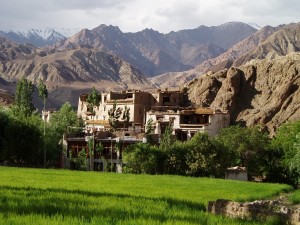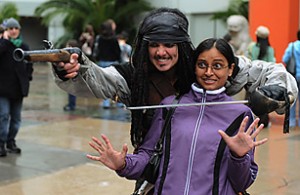Leh at every step of the breathtaking views-Manali highway, long after the images imprints. In the summer, on the road from the Kullu valley, a stream of buses and Enfield motorcycles in the world, most other road Motorable, 5328m Dizzying Heights with a visit to. The very surface, dirt from the glacial streams on the rough cut is different from the Asphalt. Different river basins with a 485-km ride Sarchu camp at night with a height of 4, 000 m on the highway takes about 24 hours for 3 months on July 15 and 15 (between.) every year. Second season, is closed due to snow.
From Manali, the Rohtang pass road (3900m) for at the beginning of a long climb across the Beas. Sewer as you progress in the reform as long as the eternal snow on the idea, Pastures of grass between the coniferous forests. With just under a breakfast stop for Dhabas to close. There is a temple near the top of a rock, from where you get crown of a great view of the upper Beas valley.
Rohtang La (la means ‘Pass’ in Tibet) Lahul and Spiti means for the difficult areas is the entrance. 5000 passed between the two – meter summit, one in the region to have the most treacherous. Sometimes people suddenly fall season were stuck. Rohtang literally “” means the bodies of the funds.
Gleaming white in the Chandra Pal Valley Massif offers exciting insights to the bottom of the slope to Rohtang. The road is where the river reaches Koksar. Parathas I can not forget, we had it. They were Aaloo parathas, stuffed fried, but served with a saucy Tibetan oil. Finger-licking irresistible!
The next few hours were some of the most beautiful in the whole trip. Since the slopes of the valley with the road works, you can see the high peaks and hanging glaciers. Sacred mountains Rangcha a strong shield around the base of the lunar-Tandi on how to bridge on the river after which Keylong Valley Bhaga Bhaga rivers with your guidance, beyond Keylong, the Bhaga valley broadens. All buses in Darcha stop for lunch here only. A roadside Dhaba with a hot cup of Tibetan Thupka is a favorite. This soup is a dish of Chinese noodles. Tibetan sauce complements the taste of the Thupka. We called Momo Tibetan court was like a delicious samosas.
If you Baralacha La, which are Darcha blow your mind, the road towards the mountain of red wine a row and yellow, green, Boulders How to Zingzing on the bar is rising from the ground than it is uninhabited. The “Twelve” three valleys, Bhaga, the moon and the head of the forms to Yunan horned. By the time you get to Sarchu Serai you’ll be ready for a night’s rest, which is in a tent. It’s a high; straight at the bottom tip of the plane is next to the river Bagha. You dhabas-dal some temporary rice for dinner. To 4:30, you have to watch 5lth further to the visit of several layers of warm clothing protection that do not stop trembling with.
You head to Lachlang La (5, 059m) from Sarchu, the second highest pass on the highway, before descending to Pang at 4, 500m. 3 km from Pang is the extraordinary Moray Plains (4, 800m), a 45-kilometre-long plateau encircled by rolling hills and brilliant white Himalayan peaks.
LA Dibring Tanglang on the road, one of the main camps for the climb to 5328m spinning begins. The best in the world and you have to reach it in time, then his nose started bleeding a little can be done. This is a symptom of altitude sickness. (More on that later), but. From here the Himalayan Karakoram Range, Ladakh video signal that you are. The road to our old Indus (Sindhu) valley is. Indus River, for thousands of years is the lifeline of India. It is a world (Indus Valley civilization) in the oldest civilizations fed. It is, of course, think in terms of the big river.
From Manali entrance to Ladakh is Upshi. This is where the Indian Army, which finished construction and for maintenance of the highway project. Strong in view of the Himalayan region cut off a road maintenance is very difficult. As the freezing point of the project is called, is amazing. Read a road board: “If you want a road to the moon, then contact Himank” please. And we have no exaggeration!
(40 km) from Leh Upshi on the way, there’s high peaks with Gompas homes and villages is crowned. The solid stone structures Gompas Buddhist monasteries, but the big temples.
The first impression was that the industry green with patches of the desert teachers. The first things you notice a Carillons prayers are with the tires. As Leh above sea level is 3, 505 meters, the highest degree a tourist experience altitude sickness. The symptoms constant headache, dizziness, drowsiness, and stuffy nose is bleeding, and include / or lack of breath. It is because your body has not yet acclimatized to the comparative lack of oxygen. So the tourism department suggests you take complete rest for at least 48 hours. Since we can not afford such a rest, we were dealing with the 24 hours before breaking out.
Since we are not already booked accommodation, we went to a hotel / guesthouses. Many of them were filled. Half a kilometer before we run, we were tired. Most of the family who did not have any place so that they were sorry women is managed by the guest house, run! A lovely “Julay” (Ladakhi “Hello”), and also welcomed us with tea.
Ladakhi capital of Leh, sprawls from the foot of a ruined Tibetan-style palace – a maze of mud-brick and concrete. Leh, the capital of the state in the seventeenth century, when his farm here Sengge Namgyal Shey, 15 km southeast of the head of the closer – Khardung China in the Karakoram Corridor. (Khardung to bring the world’s highest, 39 kms from Leh) is.
Ladakh is a travelers and trekkers’ paradise. Backpacks come with their foreign, is growing in different directions. The charm and the former Palace and cities Namgyal Gompa Tsemo included around. A little walk in the fields, Shankar Murals ports and a modern tantric deity Avalokitesvara line thousand small monastery. Just within the reach of picturesque villages and wires in Gompas Shey, a seventeenth century abandoned palace, and Tiks Gompa Hemis Gompa is amazing, this area is the largest site. Of a sitting Buddha Tiks is a large statue.
Leh, the power is very bad. Most of the time, including the night, there was no electricity. By our candlelight dinner is a lot to be forced. Through satellite telephone connections, it is very comfortable with the call by India’s hard to connect. Leh after about 8 months of the world for one year is cut, they (such as construction materials, etc.) for 3 months during the season as the most important things will happen. The only consolation is that almost all the air through the year round has been involved. But the villages on Manali – Leh highway remains completely closed for 8-9 months in a year.
Vijay Satija
Feb 2009
http://www.indiastudychannel.com/resources/49948-Road-Trip-from-Manali-Leh-Ladakh.aspx

